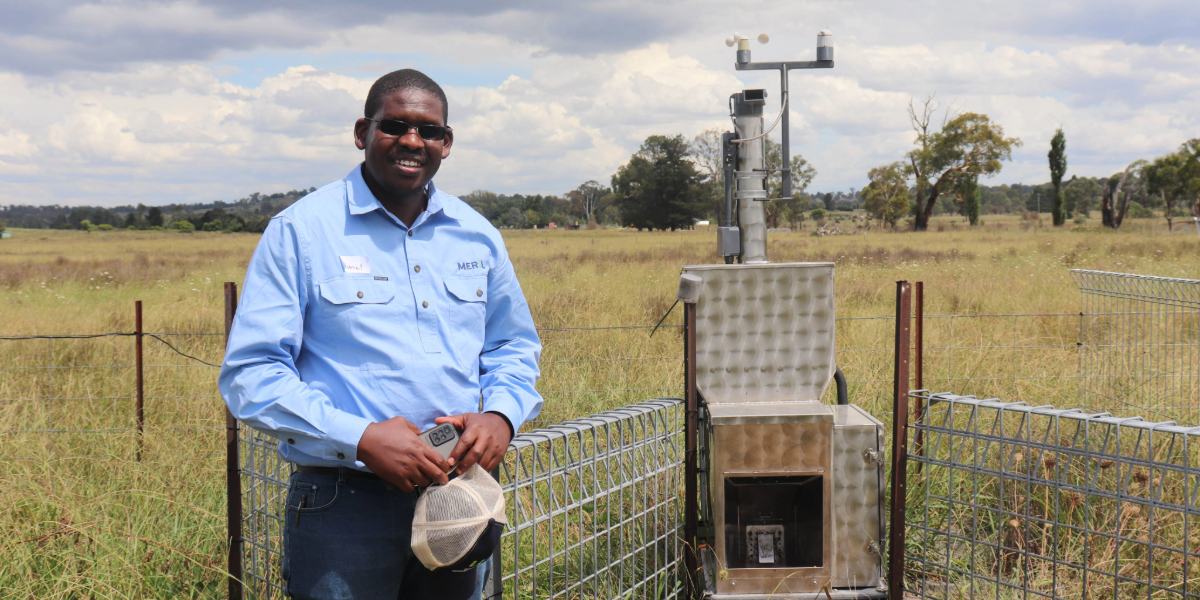The University of New England (UNE) has received a $3 million grant from the Australian Government’s Methane Reduction in Livestock Program (MERiL) to continue work leading the National Sheep Methane Project (NSMP) that’s aiming to make low-methane feed additives more accessible to sheep producers.
In addition to the MERiL grant, the project has gained significant co-funding from Australian Wool Innovation with further contributions from participating industry partners.
UNE Professor of Animal Science, Julius van der Werf, will continue to lead the collaboration between UNE, NSW Department of Primary Industries and Regional Development (NSW DPIRD), Department of Primary Industries and Regions, South Australia (PIRSA), and the University of Western Australia (UWA) to look at different ways additives can be delivered to sheep under grazing conditions in a cost-effective, practical way. Improving pastures to reduce the methane output of flocks will also be investigated.
This new phase of the project builds on work that has been ongoing for the past two years testing how effective additives are in reducing methane produced by sheep in grazing environments.
An 88 percent reduction was recorded in sheep fed Asparagopsis, or red seaweed extract, in a controlled environment at the UNE Centre for Animal Research and Teaching.
Meanwhile, in-paddock automated feeders (GreenFeeds) were used to distribute additives and measure methane produced by grazing sheep.
“Methane reduction was lower in a paddock system, likely because not all sheep gain access to their full dose of feed additive,” says Professor Van der Werf.
“Collaborators in Western Australia have also been trialling another compound, Agolin, which delivered reductions of 30 percent, but with improved productivity.”
Bovaer®, which is a feed supplement that uses the active ingredient 3-Nitrooxypropanol to block an enzyme involved in methane formation, has also been trialled through the NSMP.
“With these feed additives all being very promising, the challenge is now to find a combination of products that both decreases methane but also improves productivity.”
“One specific target area that this project will be exploring is trying to harness the energy that becomes available by inhibiting methane. We anticipate we can see this energy go to improving the productivity of sheep, which would benefit profits.”
“Breakthrough in this area of research is expected to make use of feed additives to reduce farm level methane emissions as a financially viable venture.,” says Professor Van der Werf.
Dr Daniel Sitienei is a postdoctoral research fellow working on the project, and says it’s anticipated a boost in productivity would offset the investment farmers would need to make by introducing additives.
“From the enteric methane avoided by use of feed additives, farmers would be able to sell carbon credit units and this could compliment their profits,” says Dr Sitienei.
While UNE’s arm of the collaboration focusses on in-paddock feeders, the wider project is looking at a range of ways additives can be distributed to sheep.
“One of the benefits of this collaboration is that we are able to conduct coordinated research that avoids wasteful duplication,” says Professor Van der Werf.
“For example, while UNE investigates automated in-paddock feeders, PIRSA is looking at the delivery of feed additives through water systems within the farm, while NSW DPIRD is looking at adapting the conventional feeding troughs already in use by farmers to make them for fit for purpose.”
It’s expected the project will wrap up in 2027.
Something going on in your part of the region you think people should know about? Send us a news tip or email newsdesk@netimes.com.au.

